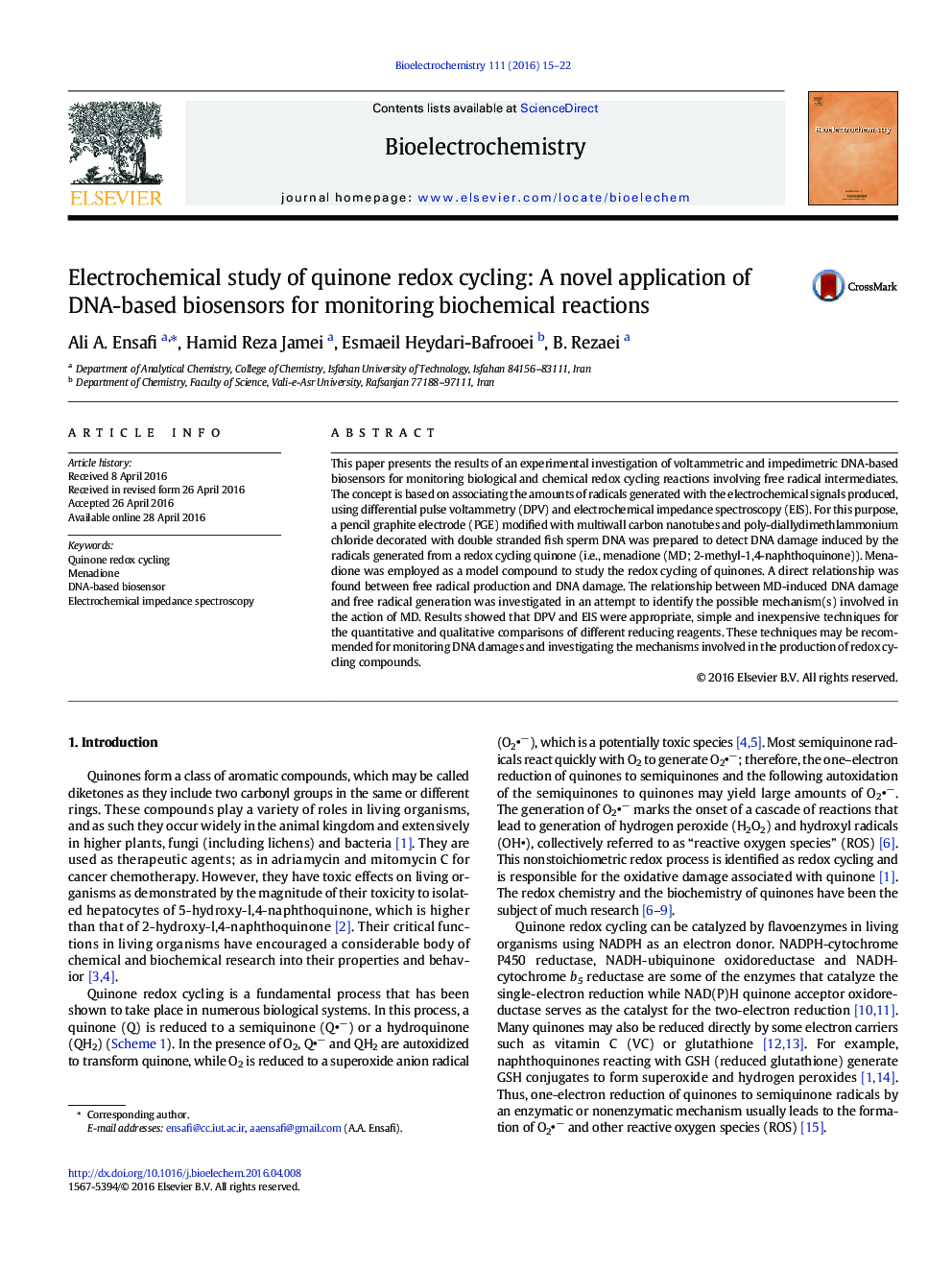| کد مقاله | کد نشریه | سال انتشار | مقاله انگلیسی | نسخه تمام متن |
|---|---|---|---|---|
| 1266832 | 1496902 | 2016 | 8 صفحه PDF | دانلود رایگان |

• A DNA-biosensor was used to investigate biological and chemical redox cycling reactions.
• Differential pulse voltammetry and electrochemical impedance spectroscopy were used.
• 2-Methyl-1,4-naphthoquinone was employed as a model to study the redox cycling.
• Charge transfer resistance and guanine oxidation signal were used as indicators.
• There is a direct relationship between free radical production and DNA damage.
This paper presents the results of an experimental investigation of voltammetric and impedimetric DNA-based biosensors for monitoring biological and chemical redox cycling reactions involving free radical intermediates. The concept is based on associating the amounts of radicals generated with the electrochemical signals produced, using differential pulse voltammetry (DPV) and electrochemical impedance spectroscopy (EIS). For this purpose, a pencil graphite electrode (PGE) modified with multiwall carbon nanotubes and poly-diallydimethlammonium chloride decorated with double stranded fish sperm DNA was prepared to detect DNA damage induced by the radicals generated from a redox cycling quinone (i.e., menadione (MD; 2-methyl-1,4-naphthoquinone)). Menadione was employed as a model compound to study the redox cycling of quinones. A direct relationship was found between free radical production and DNA damage. The relationship between MD-induced DNA damage and free radical generation was investigated in an attempt to identify the possible mechanism(s) involved in the action of MD. Results showed that DPV and EIS were appropriate, simple and inexpensive techniques for the quantitative and qualitative comparisons of different reducing reagents. These techniques may be recommended for monitoring DNA damages and investigating the mechanisms involved in the production of redox cycling compounds.
Figure optionsDownload as PowerPoint slide
Journal: Bioelectrochemistry - Volume 111, October 2016, Pages 15–22